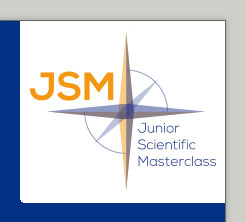Onderzoeksproject aanpassen
Projecten zijn uitsluitend aan te passen door bij het project behorende onderzoekers.
Geef via het uitrolmenu aan welke onderzoeker u bent. Nadat op u de button 'Edit project' heeft geklikt, wordt automatisch een e-mail verstuurd naar het e-mailadres van de onderzoeker die u heeft gespecificeerd.
In deze e-mail staat een link waarmee u het project kunt wijzigen.
Project properties
| Title | Endograft position and apposition after thoracic endovascular aortic repair |
|---|---|
| Keywords | thoracic endovascular aortic repair |
| Researchers |
prof. dr. J.P.P.M. de Vries dr. R.C.L. Schuurmann drs. R. Zuidema |
| Nature of the research | Retrospective observational study |
| Fields of study | surgery |
| Background / introduction |
|---|
| Thoracic endovascular aortic repair (TEVAR) is the treatment of choice for patients with a thoracic aortic aneurysm. However, subtle changes in endograft position and apposition after TEVAR may cause complications such as type I endoleak and endograft migration. Since migration and endoleak may occur at any time after TEVAR, life-long postoperative follow-up is performed by computed tomography angiography (CTA) scans. However, quantifying and visualizing subtle changes in endograft position and apposition on regular CTA scans may be challenging. CT-applied-vascular imaging analysis (VIA) prototype software (endovascular diagnostics, Utrecht, The Netherlands) can determine apposition and 3-Dimensional position of the endograft during follow-up after TEVAR. No study has focused on how position and apposition change during follow-up after TEVAR and how these parameters may be able to foresee sealing failures before they become apparent on CTA scans. The goal of this study is to quantify the acquired apposition on the first postoperative CTA scan and to identify changes of position and apposition during follow-up. |
| Research question / problem definition |
|---|
|
1. What is the apposition of the endograft within the thoracic aorta after thoracic endovascular aortic repair, and how does it change during follow-up? 2. Do subtle changes in aortic morphology, endograft position and apposition surface forecast sealing failures? |
| Workplan |
|---|
| Patients with a thoracic aneurysm who underwent TEVAR between 2010 and 2020 are expected to qualify for inclusion in this study. Data will be retrieved from de-identified pre- and postoperative CTA scans and patient records. Patient anatomy and endograft apposition will be measured with dedicated software from the CTA scans. |
| References |
|---|
| Van Noort K., Schuurmann R.C.L., Hospers G.P., van der Weijde E., Smeenk H.G., Heijmen R.H., de Vries J.P.P.M. (2019). A new methodology to determine apposition, dilatation, and position of endografts in the descending thoracic aorta after thoracic endovascular aortic repair. Journal of Endovascular Therapy, 26(5), 679-687. https://doi.org/10.1177%2F1526602819859891 |


